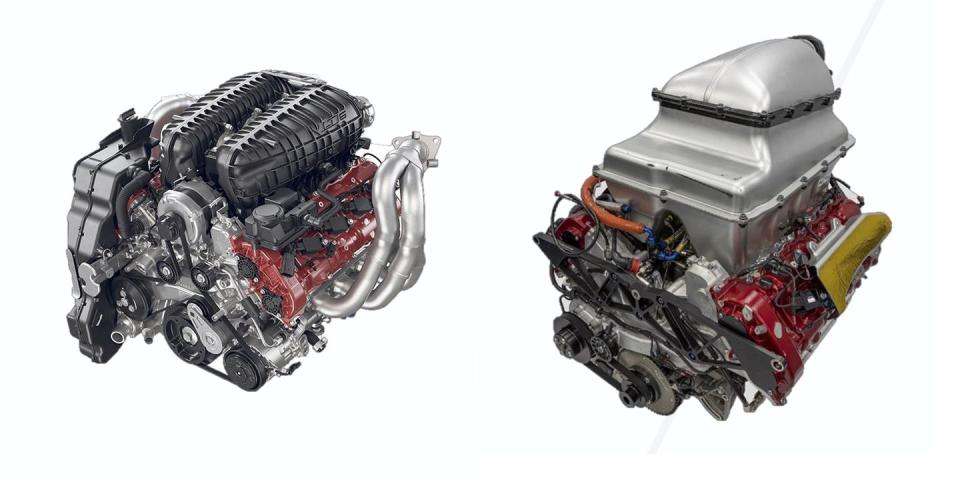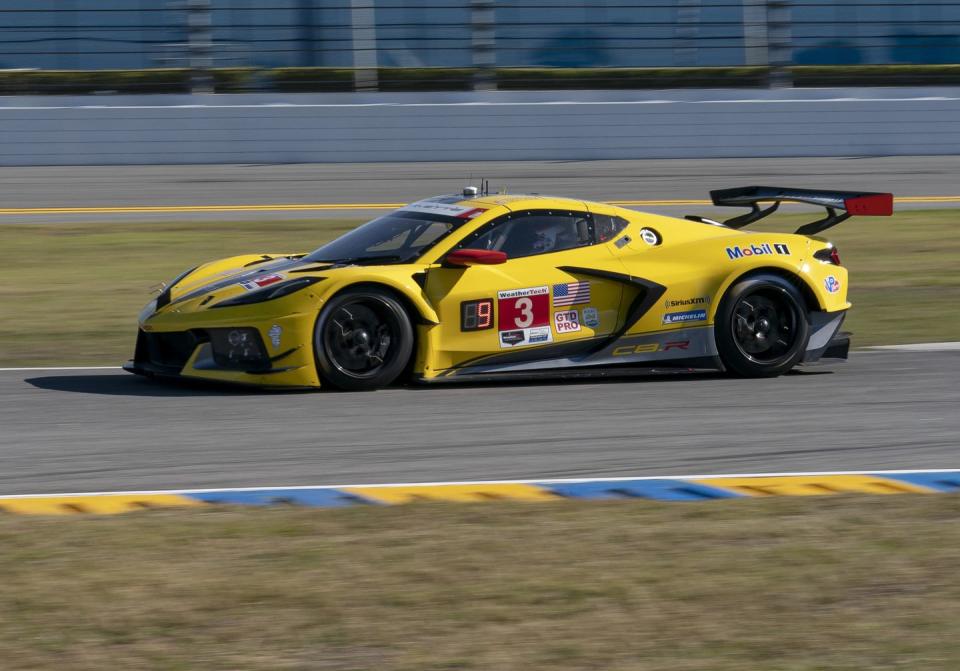The C8 Corvette Z06 Engine Shares Plenty With the C8.R Race Car

The centerpiece of the new C8 Corvette Z06 is Chevy's all-new, 8600-rpm, 670-hp naturally aspirated V-8, the LT6. But it's not the first time we're seeing this engine: The Corvette C8.R race car has used a competition version of this flat-plane crank engine, the LT6.R, since the mid-engine racer debuted for the 2020 season. Now that the road-going LT6 is out, we can take a closer look to see what's shared between these engines, and where they differ.

The LT6 and LT6.R have the most in common in the top end. Both engines use mechanical finger-follower valve actuators—a design most common in high-revving motorcycle engines—and the cylinder heads and fuel delivery systems are identical in both street and competition engines. Dustin Gardner, assistant chief engineer for the LT6, said that during the prototyping stage, the road and race teams actually shared individual fuel-system components.
Like all modern GT race cars, the C8.R is subject to balance of performance (BoP) rules, which adjust a car's power output and weight to (theoretically) create a more level playing field among a diverse set of competing cars. As a result, the LT6.R has to breathe through tiny inlet restrictors. The road-going LT6 has a novel intake system, with twin throttle bodies feeding two plenums interconnected by three tuning valves, which open and close to optimize airflow into the combustion chambers. Those valves help give the LT6 a broad torque curve despite its sky-high redline. Since race cars don't spend much time lugging around at low revs, and to accommodate BoP restrictors, the LT6.R has a much simpler intake layout, with one throttle body and a large plenum.
BoP limits most modern GTE and GT3 race cars to around 500 horsepower, give or take 20. The LT6.R consequently has its rev limiter set to around 7000 rpm—there's no real need to go further seeking power that would only be dialed back. For reference, the LT6 road engine peaks at 670 hp at 8400 rpm, 200 rpm shy of redline.
Both the LT6 and LT6.R use an engine construction that hasn't been employed in a GM V-8 for decades, with separate castings for the cylinder block and the crankcase. The racing engine uses the same block as the production Z06, but employs a slimmer lower crankcase to allow the engine to sit lower in the chassis.

Many of the racing engine's components are similar, but not identical, to their street-legal siblings. The titanium connecting rods come from the same supplier, but they're not interchangeable, and while the dry-sump oiling system is similar in concept, some of the parts are different due to the race car's unique packaging requirements.
Overall, though, the road-car and racing teams worked very closely on this new V-8. "Anything they learned, they immediately told us, and vice versa," said Yoon Lee, LT6 design systems engineer. "I've been with the Small Block team for over 20 years and it's probably the closest collaboration I can recall between the production side and the race team."
You Might Also Like

 Yahoo Autos
Yahoo Autos 